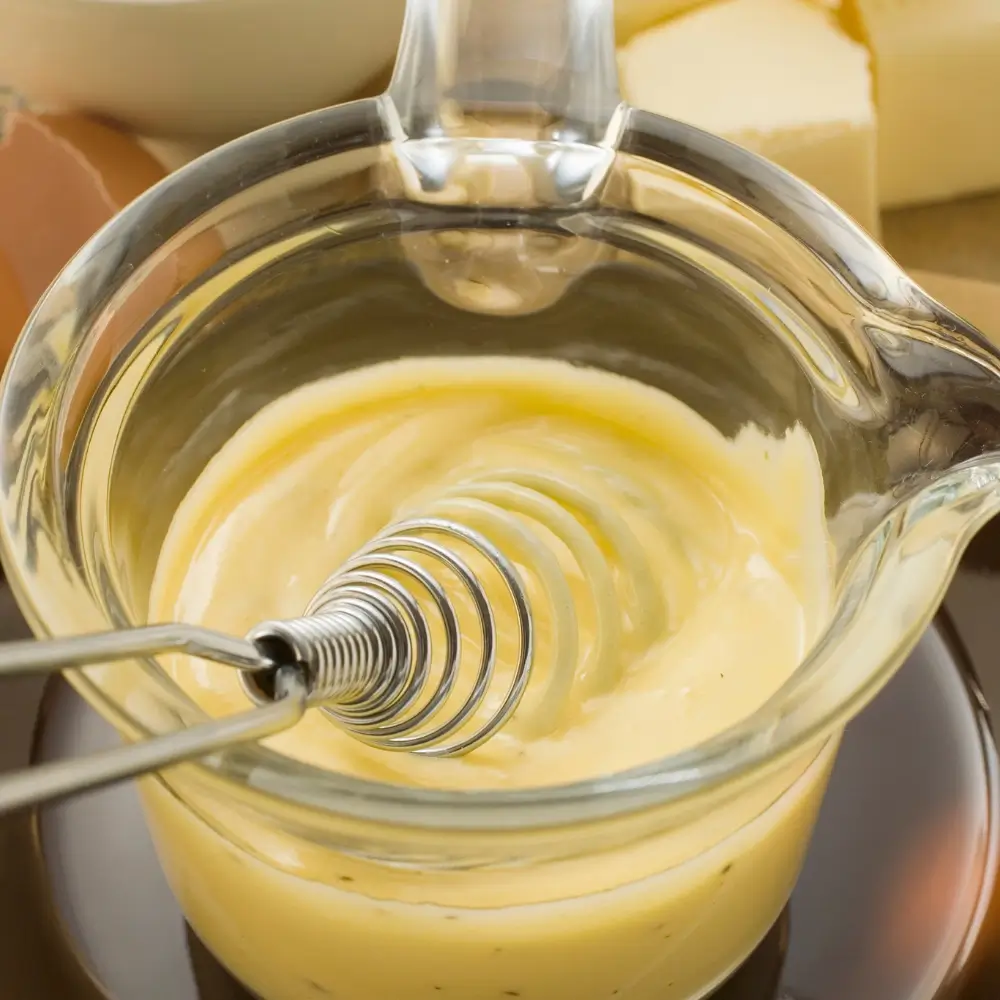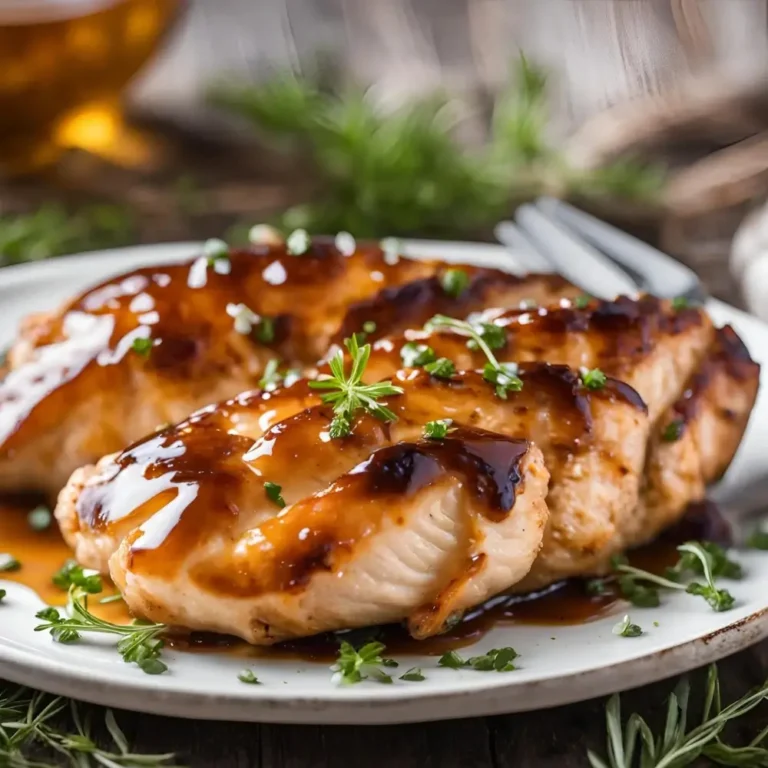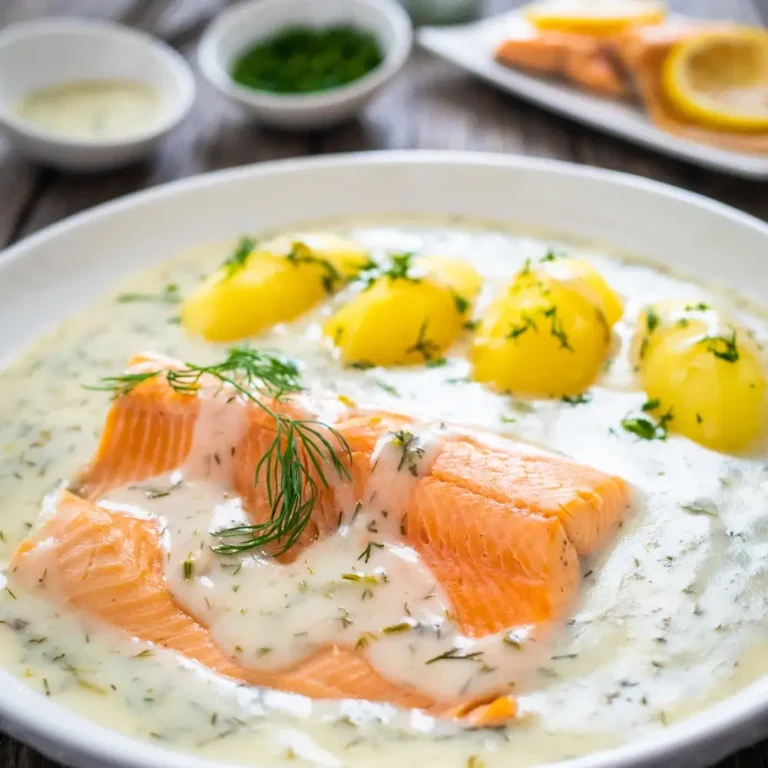Hollandaise Sauce
What makes a perfect hollandaise sauce? How can you make this rich and creamy emulsion at home? Hollandaise sauce is key in classic dishes like Eggs Benedict. It’s also great as a dip for veggies or a sauce for poached fish. With a simple recipe, you can make your meals better and wow your guests.
Learning to make hollandaise sauce from scratch is exciting. You’ll see why using top-notch ingredients and the right methods matter. This guide will teach you how to make a delicious, creamy hollandaise sauce, from the basics to fixing common mistakes.
Introduction to Hollandaise Sauce
Hollandaise sauce is a mix of eggs, butter, and lemon juice. It’s a delicate balance. By following a good recipe and practicing, you can make a smooth, creamy sauce. This sauce will make your favorite dishes even better.
Key Takeaways
- Learn the basics of a traditional hollandaise sauce recipe
- Understand the importance of using high-quality ingredients
- Master the right preparation methods for a creamy hollandaise sauce
- Discover troubleshooting tips for common hollandaise sauce mistakes
- Explore the versatility of hollandaise sauce in various dishes
- Find inspiration for new recipes using hollandaise sauce
Table of Contents
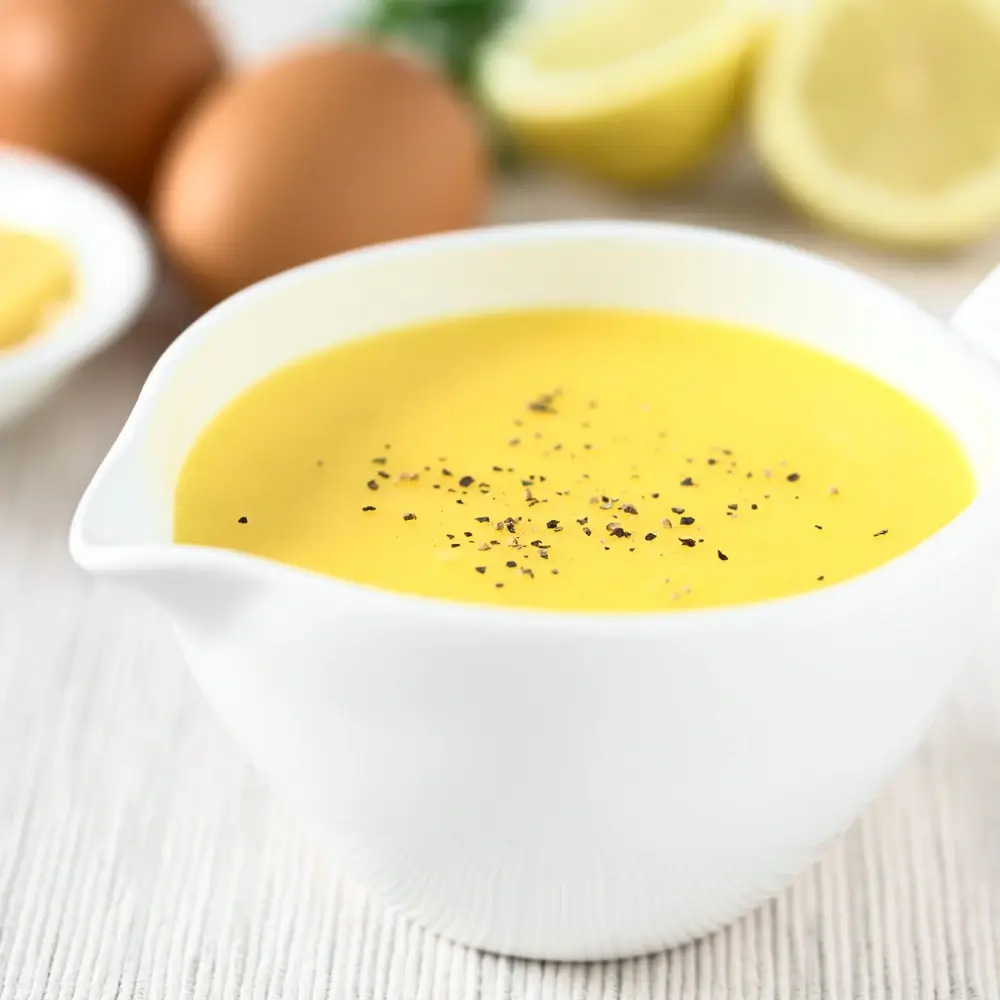
What is Hollandaise Sauce?
Hollandaise sauce is a creamy sauce made from egg yolks, butter, and lemon juice or vinegar. It’s a key part of French cuisine. The ingredients include egg yolks, butter, and lemon juice.
Origins and History
The history of hollandaise sauce goes back to the 17th century in France. French chefs created it to go with asparagus and other veggies.
Classical French Mother Sauces
Hollandaise sauce is one of the five main French mother sauces. These sauces are the base for many others. The mother sauces are:
- Béchamel
- Velouté
- Espagnole
- Hollandaise
- Tomate
Modern Applications
Today, hollandaise sauce is used in many dishes. It’s great with eggs Benedict, steamed asparagus, and grilled fish. Its creamy texture makes it versatile.
| Dish | Description |
|---|---|
| Eggs Benedict | Poached eggs on toasted English muffins with ham or bacon, topped with hollandaise sauce |
| Steamed Asparagus | Fresh asparagus steamed to perfection, served with a side of hollandaise sauce |
Essential Ingredients for Perfect Hollandaise
To make an easy hollandaise sauce, focus on quality ingredients. You’ll need egg yolks, butter, lemon juice, and salt. Choose fresh eggs with firm whites and yolks. For butter, pick unsalted, high-quality butter to control the flavor.
Using the right ingredients is key for a smooth, creamy sauce. Here are some important points:
- Egg yolks: Fresh and of good quality, as they provide richness and thickness to the sauce.
- Butter: Unsalted and of high quality, as it adds flavor and creaminess.
- Lemon juice: Freshly squeezed, as it provides a touch of acidity and brightness to the sauce.
- Salt: Used to enhance the flavors of the other ingredients and balance the sauce.
By focusing on these essential ingredients and using them in the right proportions, you can create a delicious and easy hollandaise sauce. Remember, the key to a perfect hollandaise is in the quality of the ingredients and the technique used to prepare them.
| Ingredient | Quantity | Importance |
|---|---|---|
| Egg yolks | 3-4 | Richness and thickness |
| Butter | 1/2 cup | Flavor and creaminess |
| Lemon juice | 1 tablespoon | Acidity and brightness |
| Salt | To taste | Flavor balance |
Required Kitchen Equipment
To make a tasty Hollandaise sauce, you need the right tools. A double boiler, whisk, and saucepan are classic choices. But, modern blenders and food processors can speed up the process. It’s key to use a blender sauce recipe made for this method.
Some optional tools can make things easier. A thermometer helps get the sauce to the right temperature. A spatula is handy for scraping the bowl sides. Here’s what you’ll need:
- Double boiler or a heatproof bowl set over a pot of simmering water
- Whisk or a hand mixer
- Saucepan
- Blender or food processor for a blender holland sauce recipe
- Thermometer (optional)
- Spatula (optional)
With the right tools, you can whip up a smooth Hollandaise sauce. It’s great for eggs Benedict, steamed asparagus, or more. Practice and patience will make you a pro at making this sauce, whether with a blender or traditional methods.
| Equipment | Description |
|---|---|
| Double Boiler | A heatproof bowl set over a pot of simmering water |
| Whisk | A hand mixer or a whisk used to mix the sauce |
| Blender | A kitchen appliance used to make a blender holland sauce recipe |
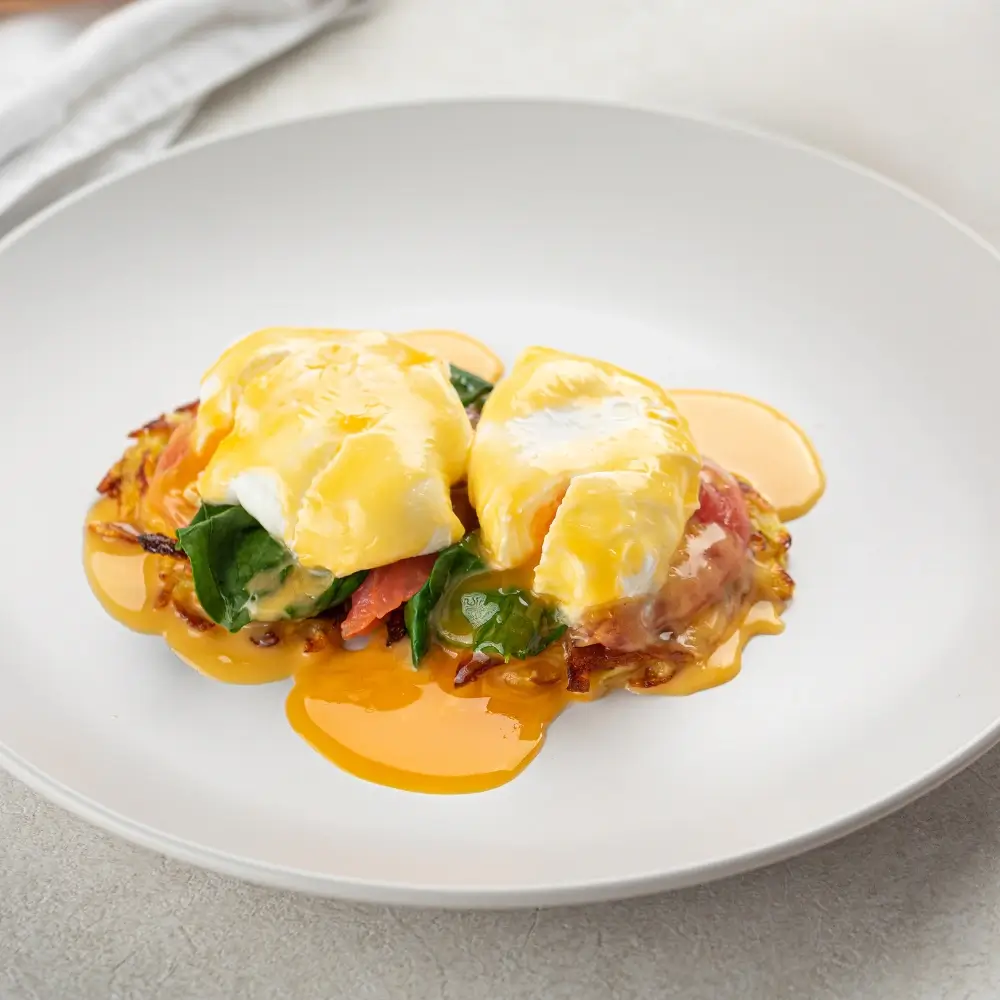
Preparing Your Workspace for Hollandaise Success
To make hollandaise sauce, you need to set up your workspace right. This means getting a double boiler ready, organizing your ingredients, and having all your tools within reach. A tidy workspace makes the process smoother and more efficient.
Here are some tips to get your workspace ready for making hollandaise sauce:
- Set up a double boiler: This is key for melting butter and cooking egg yolks.
- Organize your ingredients: Keep egg yolks, butter, lemon juice, and salt close by.
- Have the necessary equipment: Make sure you have a whisk, a heatproof bowl, and a saucepan for the double boiler.
By following these tips, you’ll be ready to learn how to make hollandaise sauce. Keep your workspace clean and organized for a successful sauce-making experience.
| Equipment | Description |
|---|---|
| Double Boiler | Essential for melting butter and cooking egg yolks |
| Whisk | Used to whisk the egg yolks and butter mixture |
| Heatproof Bowl | Used to hold the egg yolks and butter mixture |
Now that your workspace is set, you’re ready to start making hollandaise sauce. Next, we’ll explore the classic hollandaise sauce recipe.
The Classic Hollandaise Sauce Recipe
To make a delicious hollandaise sauce, start with the right ingredients and tools. The classic recipe mixes egg yolks, butter, and lemon juice. These ingredients create a smooth, creamy sauce. It’s key to use high-quality ingredients for the best taste and texture.
Here are the main ingredients and steps for a classic hollandaise sauce recipe:
- 3 large egg yolks
- 1/2 cup (1 stick) unsalted butter, cut into small pieces
- 1 tablespoon freshly squeezed lemon juice
- Salt and cayenne pepper to taste
Temperature Considerations
Temperature control is vital when making hollandaise sauce. Heat the egg yolks and butter slowly to avoid breaking or curdling. Whisk constantly to keep the sauce smooth and creamy.
Mixing Techniques
To achieve a smooth hollandaise sauce, use the right mixing techniques. Whisk the egg yolks and lemon juice in a heatproof bowl. Then, slowly add the melted butter while whisking constantly. Keep whisking until the sauce thickens and emulsifies. Season with salt and cayenne pepper to taste.
Step-by-Step Whisking Method
To make hollandaise sauce, you need to learn the whisking method. This method takes patience and focus, but it’s worth it. Begin by whisking egg yolks in a bowl until they’re light and fluffy.
Then, melt butter in a saucepan over low heat, stirring now and then. Once melted, slowly pour it into the egg yolks while whisking. This step is key to avoid scrambled eggs.
Keep whisking and add lemon juice and salt to taste. The lemon juice keeps the sauce stable. Whisk over simmering water to get the right consistency. This way, you’ll make a creamy hollandaise sauce.
Here are some tips for making hollandaise sauce:
- Use room temperature ingredients for smooth whisking.
- Constant whisking prevents eggs from scrambling and sauce from breaking.
- Adjust lemon juice and salt carefully to taste.
| Ingredient | Measurement |
|---|---|
| Egg yolks | 3 large |
| Butter | 1/2 cup (1 stick) |
| Lemon juice | 1 tablespoon |
| Salt | To taste |
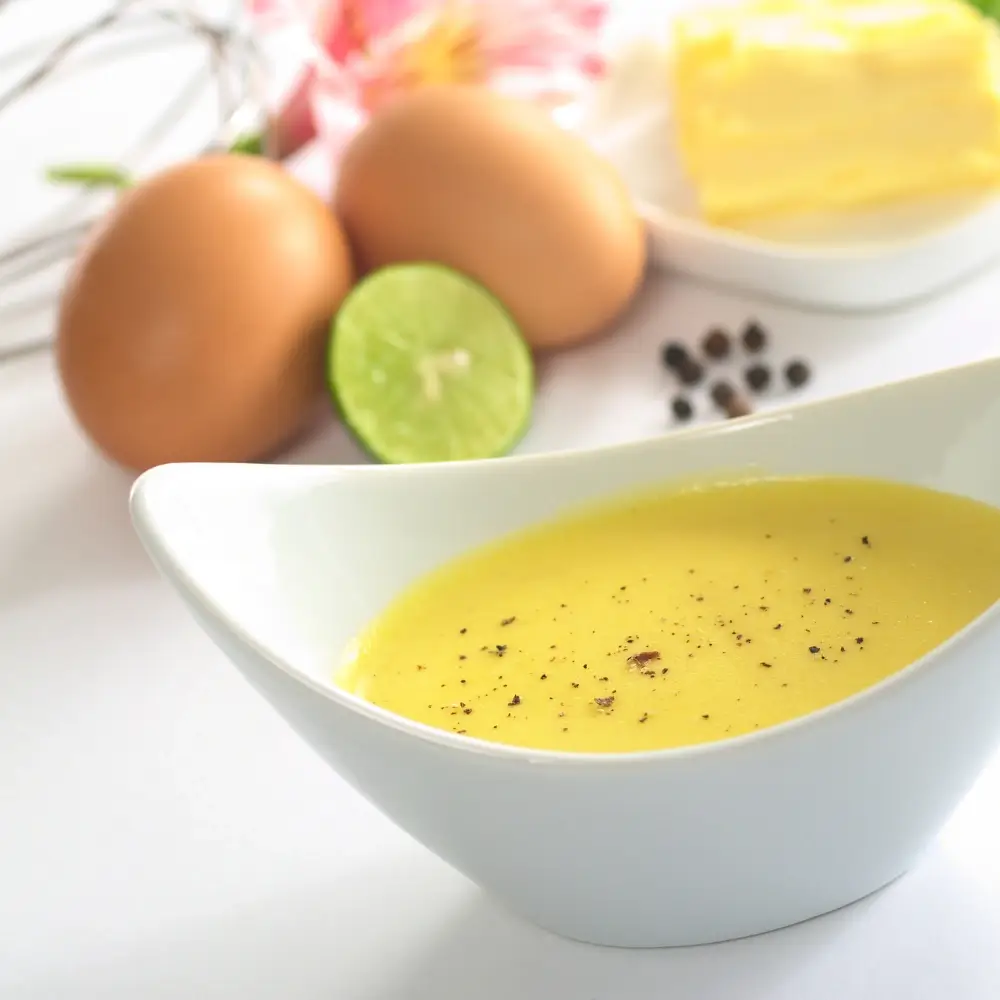
Quick Blender Hollandaise Technique
Making a tasty eggs benedict sauce requires a smooth Hollandaise sauce. The quick blender method is a game-changer. It simplifies the process and cuts down on mistakes. This way, you can whip up the sauce fast, perfect for busy mornings.
Benefits of Blender Method
The blender method is quick and gives a smooth sauce. You can get a perfect emulsion in minutes, great for eggs benedict sauce. It’s also safer for beginners, as it’s less likely to break.
Process Instructions
To make Hollandaise sauce with the blender method, follow these steps:
- Combine egg yolks, lemon juice, and a pinch of salt in a blender.
- Blend the mixture on high speed until it becomes light and fluffy.
- Slowly pour in the melted butter while continuously blending the mixture.
- Continue blending until the sauce reaches the desired consistency.
By following these simple steps, you can create a delicious and creamy Hollandaise sauce. The quick blender Hollandaise technique is a must-try for anyone who loves eggs benedict sauce and wants to make it at home with ease.
Common Hollandaise Sauce Mistakes
Making hollandaise sauce can be tricky. One big mistake is using low-quality ingredients. This can ruin the flavor and texture. Always choose fresh eggs, real butter, and high-quality lemon juice.
Another common error is scrambling the eggs. This happens when the heat is too high or whisking is not done right. To avoid this, whisk the eggs gently over low heat. Also, temper them properly before adding the butter.
Separating the sauce is another issue. It’s caused by overheating or over-whisking. To fix it, remove the sauce from the heat. Then, whisk in a small amount of cold water to restore the emulsion.
- Using low-quality hollandaise sauce ingredients
- Scrambling the eggs due to high heat or incorrect whisking
- Separating the sauce due to overheating or over-whisking
To avoid these mistakes, it’s key to use high-quality ingredients and follow the right techniques. This way, you’ll make a rich, creamy, and delicious hollandaise sauce. It will take your dishes to the next level.
| Mistake | Cause | Solution |
|---|---|---|
| Scrambled eggs | High heat or incorrect whisking | Whisk gently over low heat, temper eggs properly |
| Separated sauce | Overheating or over-whisking | Remove from heat, whisk in cold water to restore emulsion |
Troubleshooting Your Sauce
When making easy hollandaise sauce, you might run into some problems. If your sauce breaks or curdles, don’t worry. You can fix it with a few easy steps and get it just right.
First, remember how important temperature and whisking are. If your sauce breaks, add a bit of warm water to mix it back together. For curdled sauce, strain it through a fine-mesh sieve to get rid of lumps.
Fixing Common Issues
- Broken sauce: whisk in warm water to re-emulsify
- Curdled sauce: strain through a fine-mesh sieve to remove lumps
- Too thick: whisk in a little warm water to thin out
- Too thin: whisk in a little more butter to thicken
By following these steps, you can make a tasty hollandaise sauce. It’s great for eggs Benedict, asparagus, or other dishes. Stay calm and patient, and don’t hesitate to try different things until you get it right.
Storage and Reheating Tips
Mastering blender hollandaise sauce is just the start. Storing and reheating it right is key to keep its creamy texture and taste. You can keep hollandaise sauce in an airtight container in the fridge for up to a week. Or, freeze it for up to three months.
Proper Storage Methods
Always handle the sauce safely to avoid contamination. Store it in a clean, dry place. When refrigerating, seal the container tightly to keep air out. For freezing, divide the sauce into smaller parts for easier reheating.
Safe Reheating Techniques
Reheating hollandaise sauce needs care to keep it smooth. You can gently reheat it over low heat, whisking constantly. Or, use a double boiler for slow warming. Another way is to reheat in short microwave bursts, whisking between each.
- Reheat the sauce over low heat, whisking constantly, to prevent breaking the emulsion.
- Use a double boiler to warm the sauce slowly and gently.
- Reheat the sauce in short bursts in the microwave, checking and whisking between each interval.
By following these tips, you can enjoy your blender hollandaise sauce for longer. It will stay rich and creamy.
| Storage Method | Shelf Life |
|---|---|
| Refrigeration | Up to 1 week |
| Freezing | Up to 3 months |
Popular Hollandaise Variations
Hollandaise sauce is a versatile dish that you can make your own. You can try adding garlic or herbs to enhance its flavor. This way, you can create unique variations that you’ll love.
Here are some popular hollandaise sauce variations:
- Garlic hollandaise: infused with roasted garlic for a rich and savory flavor
- Herb hollandaise: mixed with fresh herbs like parsley or dill for a bright and refreshing taste
- Lighter hollandaise: made with less butter or egg yolks for a healthier alternative
These variations are great for many dishes, like eggs benedict or steamed asparagus. By trying out different hollandaise sauce recipes, you can make your cooking more exciting. You’ll discover the endless possibilities of this classic sauce.
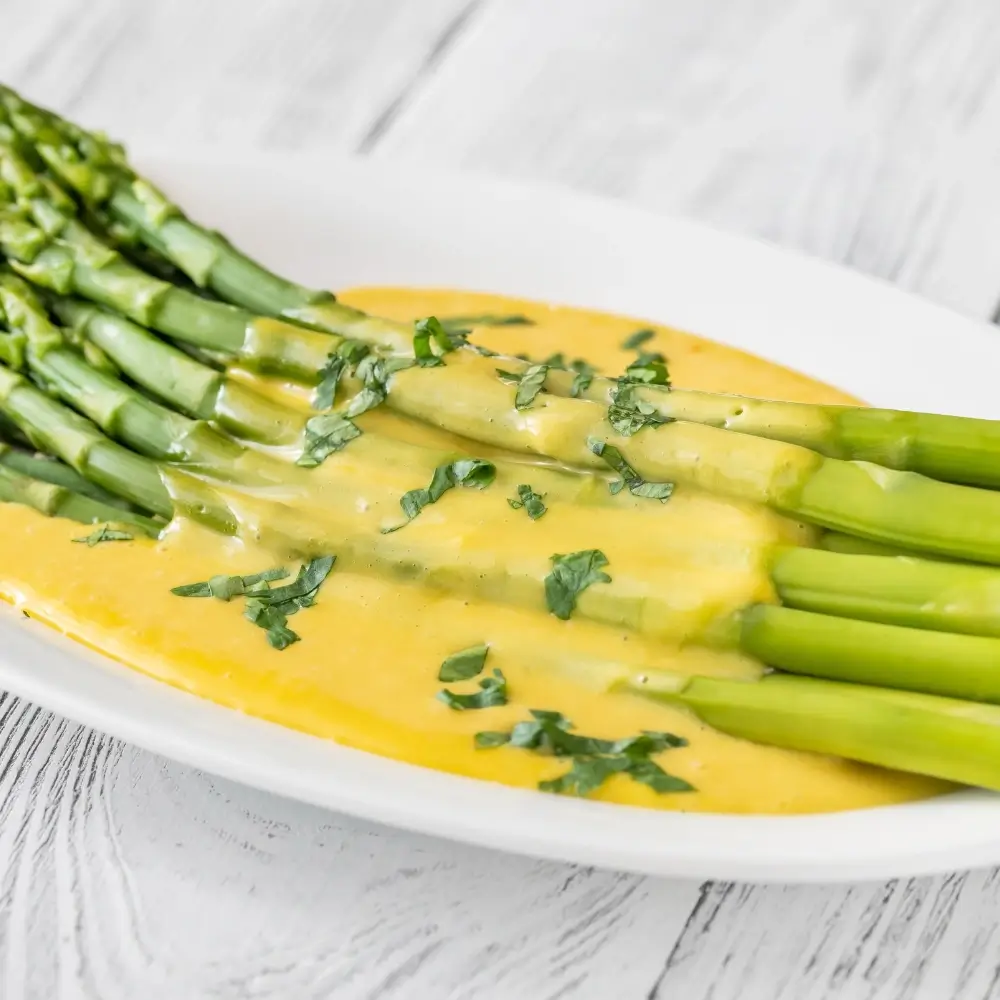
Dishes That Pair Perfectly with Hollandaise
Understanding what hollandaise sauce is, it’s key to think about what goes well with it. This sauce is great for many meals, from breakfast to dinner. It makes any dish taste better.
Try it with Eggs Benedict, steamed asparagus, or smoked salmon for a classic taste. These pairings show how hollandaise can bring out the best in food. For something new, try it with grilled meats like steak or chicken. It adds a rich flavor to summer barbecues.
Classic Pairings
- Eggs Benedict: a timeless breakfast favorite that relies on hollandaise sauce to tie its components together
- Steamed asparagus: a simple yet elegant side dish that benefits from the creamy texture of hollandaise
- Smoked salmon: a delicate fish that pairs perfectly with the rich, buttery flavor of hollandaise sauce
Modern Combinations
For a modern twist, pair hollandaise with roasted veggies like Brussels sprouts or broccoli. It makes a creamy, indulgent side dish. You can also use it as a dip for grilled meats or a sauce for pan-seared fish. The secret is to balance its richness with lighter, fresher tastes.
Health and Dietary Considerations
Learning to make hollandaise sauce comes with health and dietary thoughts. This sauce is very high in calories and fat. It’s a big worry for those watching their weight or dealing with health issues. Also, it can be a problem for people with egg and dairy allergies.
To make a healthier hollandaise, use less butter or egg yolks. This cuts down calories and makes it better for diets. For those who can’t have traditional ingredients, try vegan or dairy-free options. Vegan butter or egg replacers are good substitutes.
Here are some tips for making hollandaise sauce with dietary considerations in mind:
- Use egg yolks from free-range or organic farms to reduce the risk of salmonella
- Choose a high-quality, low-fat butter to reduce the overall calorie count
- Consider using a blender or food processor to make the sauce, as this can help reduce the amount of butter needed
By paying attention to ingredients and how you make hollandaise sauce, you can enjoy it while thinking about your health. Whether you stick to the traditional recipe or make changes, knowing how to make hollandaise sauce that fits your diet is key.
| Dietary Consideration | Modification |
|---|---|
| Egg allergy | Use egg replacers or flaxseed |
| Dairy intolerance | Use vegan butter or dairy-free milk |
| Low-fat diet | Use less butter or choose a low-fat alternative |
Conclusion: Mastering Your Hollandaise Journey
As you finish this guide on making creamy hollandaise sauce, remember that practice is key. This sauce is rich and velvety, with a delicate flavor. It’s great for many dishes, like eggs Benedict and steamed asparagus.
Experiment with new ingredients and flavors to create your own version. Add fresh lemon juice or paprika for a unique twist. With practice, you’ll be making this sauce like a pro.
Whether you’re a pro chef or just starting, learning to make hollandaise sauce is a skill worth having. Be creative and have fun mastering this beloved sauce.
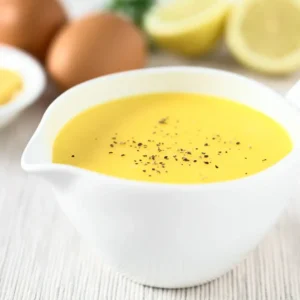
Hollandaise Sauce
Ingredients
- ½ cup unsalted butter
- 3 large egg yolks
- 1 tablespoon lemon juice
- 1 teaspoon Dijon mustard (optional)
- Salt and white pepper to taste
Instructions
- In a small saucepan, melt the butter over low heat. Once melted, remove from heat and set aside.
- In a heatproof bowl, whisk the egg yolks and lemon juice together until smooth.
- Place the bowl over a pot of simmering water (double boiler method), ensuring the bowl doesn't touch the water. Whisk constantly until the egg mixture thickens, about 3-4 minutes.
- Slowly drizzle the melted butter into the egg mixture while continuously whisking to emulsify the sauce.
- Stir in Dijon mustard (if using) and season with salt and white pepper to taste.
- Serve immediately over eggs Benedict, steamed asparagus, or grilled seafood. Enjoy your homemade Hollandaise Sauce!
FAQ
What is Hollandaise Sauce made of?
The classic sauce is made with egg yolks, butter, lemon juice and a pinch of salt. The ingredients are emulsified over low heat to create a smooth, creamy texture.
What does Hollandaise Sauce taste like?
This sauce has a rich, buttery taste with a slight tangy kick from the lemon juice. It’s smooth, velvety texture enhances the overall taste experience.
What does Hollandaise Sauce go with?
This sauce is commonly served with eggs Benedict, steamed vegetables like asparagus, and seafood dishes like poached salmon.
Is Hollandaise Sauce mayonnaise?
No, this sauce and mayonnaise are different, the former is a hot emulsion made with butter, while mayonnaise is a cold emulsion made with oil.
Why is it called Hollandaise?
It means “Dutch sauce” in French, as it is believed to have originated in the Netherlands before being refined into French cuisine.
